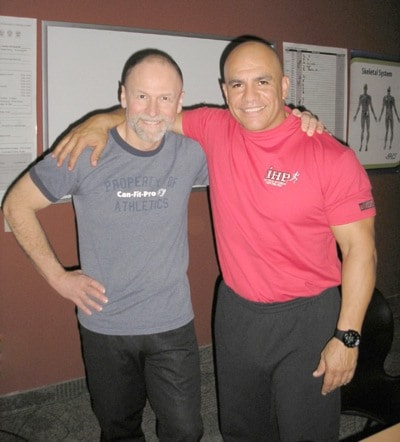In the last 60 years, our society has become more and more sedentary and the results are seen throughout various demographic groups.
“Sitting Disease” is rampant, as is obesity, diabetes and well, the list goes on. Acknowledging the opportunity, a major business sector has grown around the health and wellness industry since the Second World War. Recognizing the increasing need for the human body to exercise, the York Barbell System of Training was developed in the 1950s and was soon followed by the first resistance training machines by Universal and Nautilus.
In an attempt to simulate natural movements, varying resistance systems were then developed. In the 1970s and 1980s the high tech era made its entry.
Resistance training and cardio-machines became more complex and the number of manufacturers skyrocketed. This boom gave birth to huge facilities that housed large collections of equipment, activities and services. Some of the facilities now top 200,000 square feet!
In spite of the ‘techno’ fitness market, the industry has seen a trend to get back to basics. Fitness training has been evident since the first Olympic Games in ancient Greece but the methodologies of functional training have only been applied since the 1980s by leaders in the rehabilitation and sport training fields. Our sedentary culture no longer provides the everyday activities our forefathers enjoyed. Given the huge variety of training methods, we are well advised to determine what functional is when it comes to physical fitness.
As humans, we engage in four basic groups of movements: we stand, walk or run; we push or pull; we reach down or reach up and we rotate in the process of all of these activities.
We should also realize that groups of muscles are responsible for these movements and not just individual or isolated muscles. As every human body is different and our everyday needs vary, we all have different abilities when it comes to these functional movements. It follows that if we want to perform everyday activities without stress or injury, we should exercise the muscle groups that make them possible. Running with the grandkids, moving boxes off a shelf, reaching down to pick up a golf ball or turning to talk to the kids in the back seat are all can be enhanced by functional training.
Chris Hartridge has just come back from Ottawa with a new and exciting certification as a functional training specialist. One of the leaders in the resurgence of this training is J.C. Santana from The Institute of Human Performance, Florida. In February he took 21 fitness trainers from across Canada through his FTS program. His methods of fitness training are based on integrated body movements where muscle groups are progressively trained for an activity and the person performing it. Clearly this can encompass a lot of activities. Sports, workplace movements, recreation and all those mobility and strength issues that challenge us day to day. For bodybuilding enthusiasts, integrating functional training into traditional training protocols can yield excellent results due to increased neural activity require to perform the exercises.
Want to improve your golf game? Shave time from your 10K run? Gain more strength in the gym? Plant the garden without back pain? To inquire about functional training contact Chris at H3F Heather Hartridge Health & Fitness on Two Mile Flat, 250-992-1502 or visit www.heatherhartridge.com.
Chris Hartridge is a fitness instructor and laughter coach in Quesnel.
